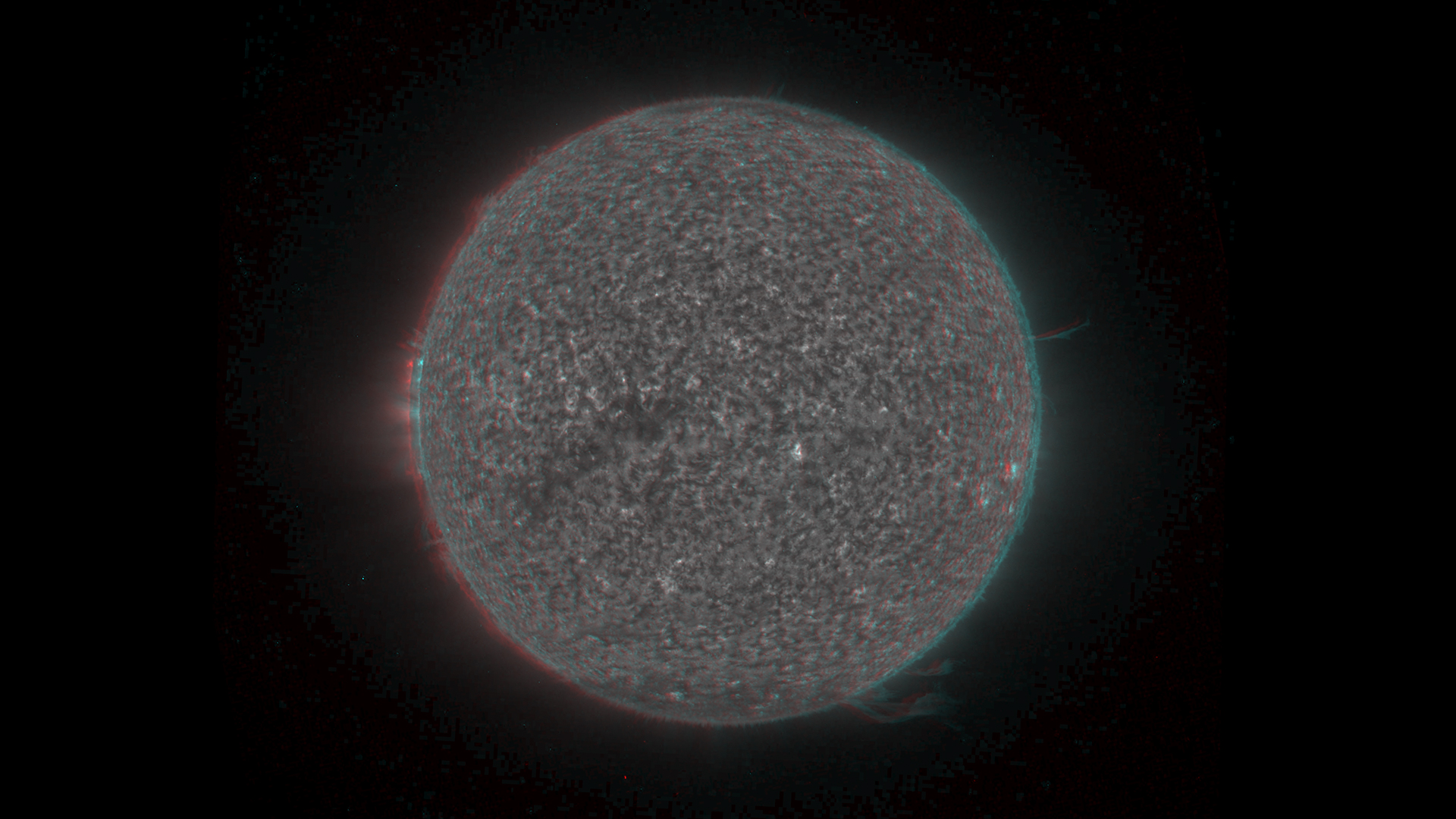2007 SPACE SCIENCE VIDEOTAPES |
| |
Tape Title | Record ID | Date Produced | TRT: |
Synopsis |
| NASA SPACECRAFT CAPTURE FIRST 3D IMAGES OF SUN | G07-027 | 4/23/07 | 9:32 | NASA's Solar TErrestrial RElations Observatory (STEREO) satellites have made the first three-dimensional images of the sun. For the first time, scientists will be able to see structures in the Sun's atmosphere in three dimensions. The new view will greatly aid scientists' ability to understand solar physics and there by improve space weather forecasting. This video contains 3-D anaglyph video and images. The 3-D video can be seen with red and cyan 3-d paper glasses. You can find out how to obtain them or make your own at www.nasa.gov/stereo
|
TAPE CONTENTS: |
| ITEM (1): EUVI image
- STEREO's Extreme Ultraviolet Imaging Telescope captured these images of the Sun March 17-27, 2007. STEREO can see the sun in several different wavelengths. Each wavelength allows scientists to see different features on the sun.
Courtesy: NASA
|
| ITEM (2): 3-D Full Disk Sun - This clips shows the full sun in 3-D. These 3-D images combine left and right eye images to create 3-D images, called anaglyphs. For the full 3D effect you would need to see the images in a venue that provides two stereo video projectors.
Courtesy: NASA
|
| ITEM (3): STEREO 3-D Stills - These stills combine all of STEREO's wavelengths into one picture. The first set of yellow stills are 2-D, the second set are 3-D stills. Combining all the wavelength allows scientist to compare different features and wavelengths.
Courtesy: NASA
|
| ITEM (4): STEREO 3-D Active Regions - This 3-D clip highlights active regions on the sun.
Courtesy: NASA
|
| ITEM (5): STEREO 3-D of the Poles - This 3-D video highlights the poles in 3-D. During the movie showing the south pole, material can be seen erupting off the sun in the lower right side of the image.
Courtesy: NASA
|
| ITEM (6): 3-D Models of Magnetic Fields - Solar scientists will use STEREO 3-D data to improve computer models that will ultimately lead to predictions of when solar eruptions occur. The first model shows magnetic fields around the sun. The second model focuses on an active region. These models are currently static, STEREO 3-D data will help add dynamic (time-changing) features to these models.
Courtesy: NASA
|
| ITEM (7): How Do You Make 3-D - Most human beings use what is known as binocular vision to perceive depth and see the world in 3D. The binocular vision system relies on the fact that we have two eyes, which are approximately 3 inches apart. This separation causes each eye to see the world from a slightly different perspective. The brain fuses these two views together and uses them to calculate distance, creating our sense of depth. STEREO operates on the same premise. STEREO's twin satellites capture two images. A computer fuses the images together to make 3-D, as shown in this animation.
Courtesy: NASA
|
| ITEM (8): Comet McNaught - STEREO's can see the sun's impact on the entire inner solar system with the observatory's five telescopes. One example of the imaging capability is shown in this image of Comet McNaught. The comet's tail spreads over more than 100 million miles.
Courtesy: NASA
|
| ITEM (9): Coronal Mass Ejections (CME) Animation - Solar flares and coronal mass ejections (CMEs) are the largest explosions in the solar system. They are caused by the buildup and sudden release of magnetic stress in the solar atmosphere above the giant magnetic poles we see as sunspots. CMEs, giant clouds of plasma ejected into space by the sun, can cause magnetic storms affecting communication systems, power grids and astronauts in space.
Courtesy: NASA
|
| ITEM (10): STEREO Satellite Animation - This is an animation of the STEREO satellite.
Courtesy: NASA
|
 Space Science Gallery
Space Science Gallery